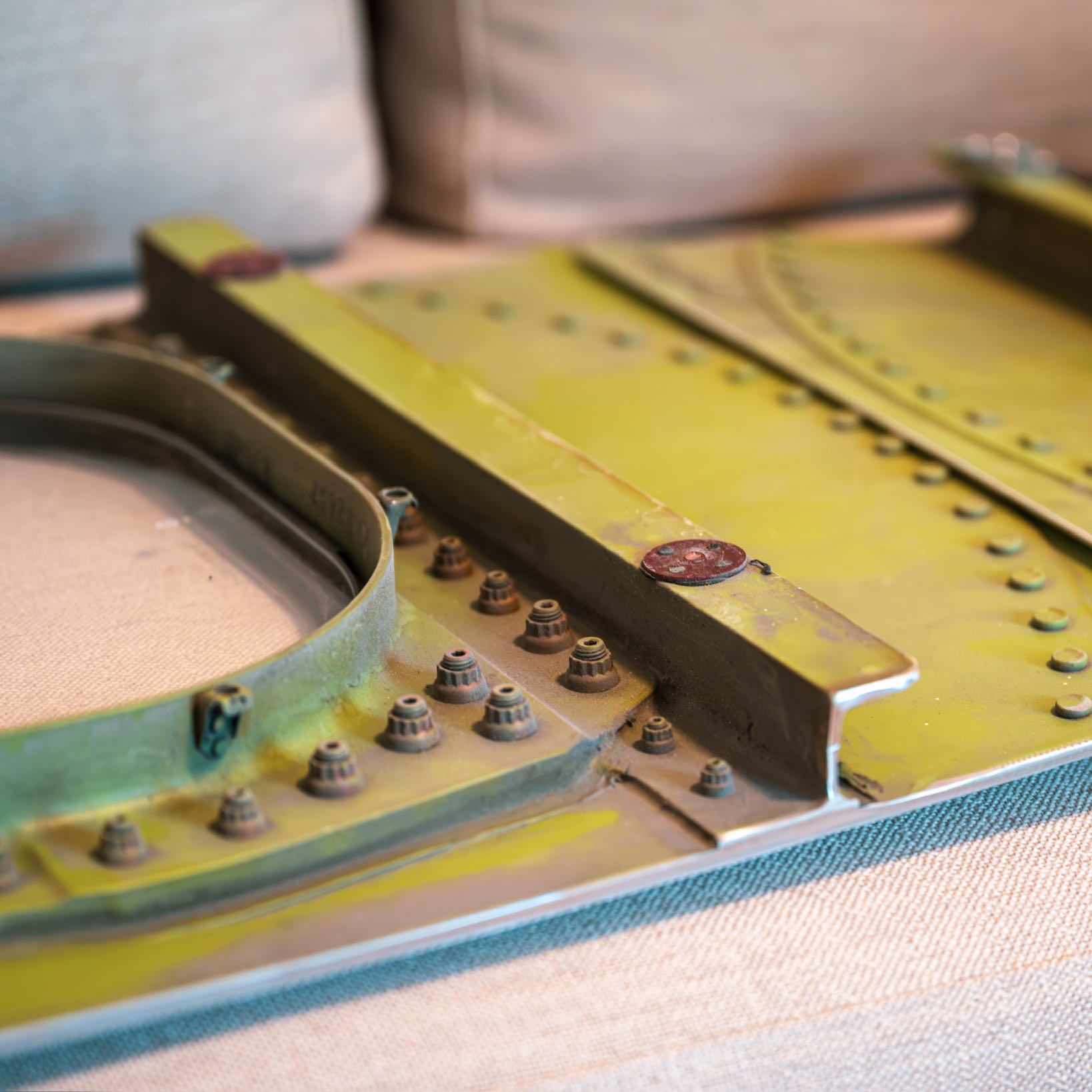Furniture made from aircraft parts – aviation history in a new context
The transformation of decommissioned aircraft parts into furnishings opens up new perspectives in interior design. It combines historical technological elements with modern usage concepts—a combination that not only considers material resources but also enables creative design.
Design ideas with an aviation theme
A table made from a former wing element, a wall bar made from a cabin section – furniture made from aircraft components brings technological history into new living contexts. The use of these materials offers distinctive surfaces and shapes that differ from standard furniture.
Reuse with a design focus
Many aviation components were originally designed for high loads and specific applications. These properties also make them attractive for the furniture sector – not least because of their material quality and industrial design.
Traces of original use often remain visible and contribute to the character of the furniture. These visible signs of wear can be interpreted as an indication of the previous life cycle.
Sustainable approach: rethinking materials
By recycling components that would otherwise be disposed of, you contribute to resource conservation. Metals like aluminum, in particular, are easy to reuse and are therefore specifically used in upcycling.

Conscious purchasing decisions in the area of interior design can encourage a focus on durable and reused materials. Repurposing aircraft parts can be part of a sustainable design approach that considers functionality and material history.
Between function and individuality
Upcycled furniture made from aircraft offers a way to integrate technological history into a customized interior design concept. The focus is not only on the exterior design, but also on the original material properties. For those interested, this offers an alternative to conventional furniture.
Field report: Furniture with a past
When you touch a table made of aircraft material, you can feel the structure of the raw material. The combination of industrial technology and a new application can leave a lasting impression—whether it's due to aesthetic interest or a personal fascination with the history of technology.
Dealing with criticism
Historical significance
Not all aircraft parts are suitable for museum preservation. Upcycling often involves components that are no longer serviceable. By redesigning them, they can still be preserved and appreciated in a new form.
Comfort and function
Aircraft parts weren't designed for living areas, but they can be made functional with proper processing. When it comes to furniture made from these materials, adapting them to their new purpose plays an important role.
economy
Upcycled furniture made from aerospace components is generally not mass-produced. The price depends on factors such as availability, material quality, and the craftsmanship involved in the processing.
Market development
As with many design trends, there's a risk that an individual style loses its expression through mass production. Transparent communication about the origin and craftsmanship of furniture pieces can help to establish their identity.
Conclusion
Upcycled aircraft furniture offers the opportunity to experience materials with a technical history in new contexts. They combine design with reuse, thus enabling a conscious exploration of design and sustainability. Integrating such furniture into one's living space sets a precedent for a reflective approach to resources and interior design.



